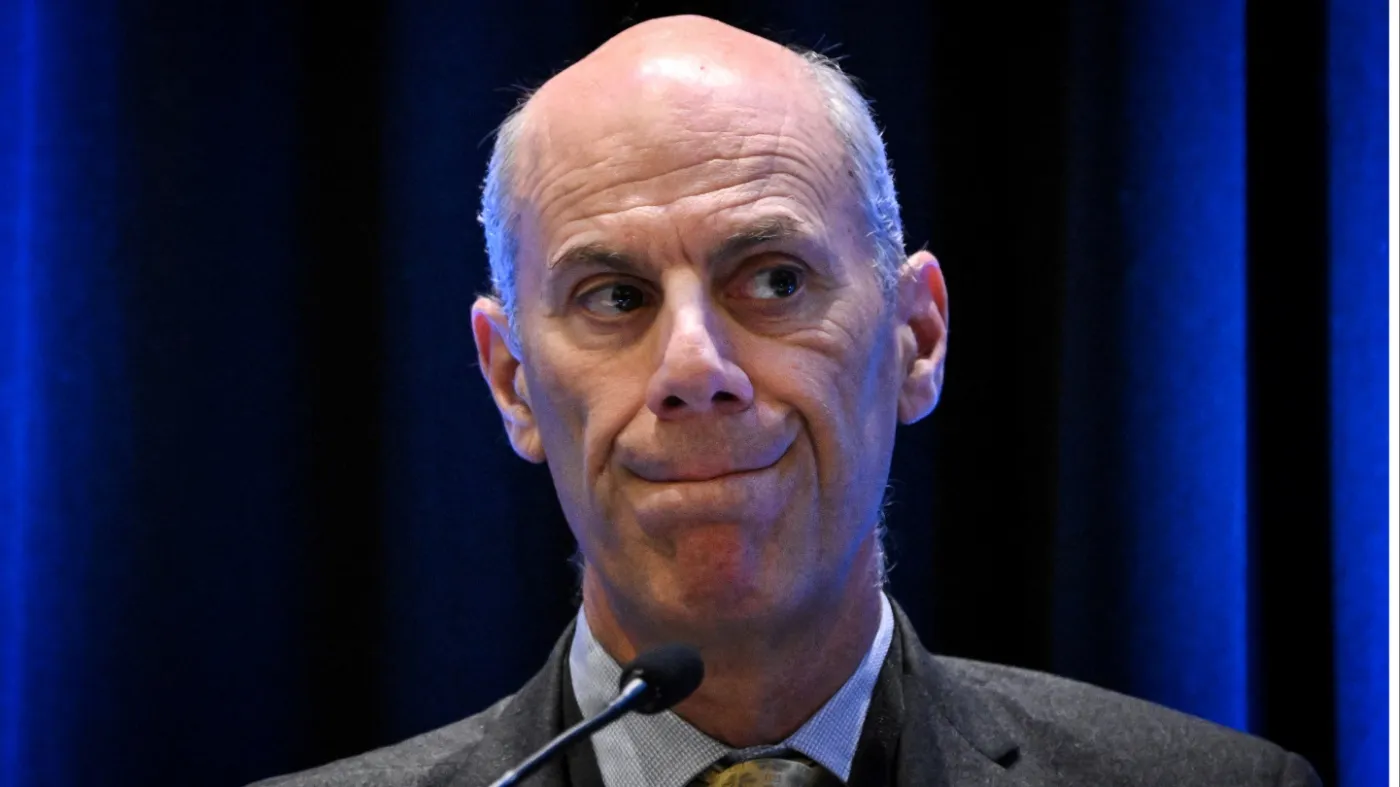The Federal Reserve has begun to push the market away from the conviction that the second half of this year will see interest rates falling significantly.
Federal Reserve Bank of St. Louis President James Bullard said on Tuesday that Wall Street was heading off in an improbable direction by pricing assets to reflect the Fed’s target rate falling by at least half a percentage point, or 50 basis points, by the end of the year.
In an interview with Bloomberg TV, Bullard said that Wall Street was too focused on the idea that banking turmoil would tighten financial conditions and change the outlook for the economy and interest rates. He sees an 80 percent to 85 percent probability that the economy will follow a “branch” in which financial stress will ease, the economy will continue to grow at a slow rate, and the labor market will remain very tight. The remaining odds are for a branch of increased financial distress, in which “all bets are off,” Bullard said.
“The problem with Wall Street is they’ve got too much probability on that branch,” Bullard said.
The Fed Got Hawkish While Market Went Dovish
At the last meeting of the Federal Reserve, the Summary of Economic Projections showed that the median expectation for the federal funds rate at the end of the year is 5.1 percent, unchanged from the December meeting. The median expectation for the end of 2023 moved up to 4.3 percent from 4.1 percent, essentially pricing in one less rate cut than had been anticipated in December. That suggests that Fed officials expect inflation to be more stubborn than they had thought.
Enter your email address
SUBSCRIBE
By subscribing, you agree to our terms of use & privacy policy. You will receive email marketing messages from Breitbart News Network to the email you provide. You may unsubscribe at any time.
Indeed, the expected year-end personal consumption expenditure (PCE) price index now has inflation running at 3.3 percent, up from 3.1 percent. Core PCE prices are expected to be up 3.6 percent, a tick up from the 3.5 percent in December.
The dispersion of expectations among Federal Open Market Committee participants has also gotten wider, meaning there is more uncertainty about the future. Importantly, however, this widening has exclusively come from the upper end of the interest rate and inflation expectations moving higher. The range of forecasts for the fed funds rate had been 5.1 percent to 5.4 percent. At the latest meeting, the range moved to 5.1 percent to 5.6 percent. Similarly, the range for PCE inflation went from 2.9 to 3.5 to 3.0 to 3.8 percent. Core PCE inflation forecasts did not widen but did move up, going from 3.2 to 3.7 in December to 3.5 to 3.9 in March.
Traders work during the closing bell at the New York Stock Exchange on March 17, 2020. (JOHANNES EISELE/AFP via Getty Images)
The forecasts for the labor market also moved in a more hawkish direction. Here the sign is reversed, where a decline in the forecast of the low end of the range is an indicator of a tighter labor market. The median forecast for unemployment at year-end ticked down to 4.5 percent from 4.6 percent. The range went from 4.4 percent to 4.7 percent in the December forecast to 4.0 to 4.7 percent.
The top of the dots on the Fed’s famous “dot plot” shows a single participant forecasting a Fed target of between 5.75 and six percent. There were three dots—representing three meeting participants—at the 5.5 percent to 5.75 percent range. Bullard on Monday appeared to out himself as one of those three, saying his own forecast was for rates to peak at 5.625 percent later this year.
The Market Sill Doubts the Fed
Markets appeared to shrug off Bullard’s warning on Monday.
The CME Group’s Fed Watch tool, which is based on prices of fed funds futures, currently has only around an 11 percent chance that the Fed maintains its current target through the end of the year and less than a two percent chance of rates being just 25 basis points higher. The odds strongly favor somewhere between one and three cuts from here—or four cuts if you think there will be one more hike at the May meeting. That’s pretty much unchanged since last week.
St. Louis Federal Reserve President James Bullard gestures while speaking at a conference in London on Oct. 15, 2019. (Luke MacGregor/Bloomberg via Getty Images)
“Going into this weekend, they were pricing four rate cuts over the coming year,” Bloomberg’s Mike McKee asked Bullard. “Why are you and Wall Street so far apart?”
“They should listen to me,” Bullard said.
We expect that over the coming days and weeks, Fed officials will keep attempting to push Wall Street in this direction. Those who ignore Bullard now will likely come to regret it.




